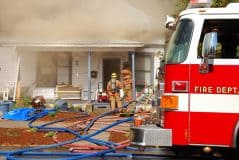Do You Need ATV Insurance?
Normal
0
false
false
false
EN-US
X-NONE
X-NONE
/* Style Definitions */
table.MsoNormalTable
{mso-style-name:”Table Normal”;
mso-tstyle-rowband-size:0;
mso-tstyle-colband-size:0;
mso-style-noshow:yes;
mso-style-priority:99;
mso-style-parent:””;
mso-padding-alt:0in 5.4pt 0in 5.4pt;
mso-para-margin:0in;
mso-para-margin-bottom:.0001pt;
mso-pagination:widow-orphan;
font-size:12.0pt;
font-family:”Arial”,”sans-serif”;}
It’s spring – the perfect time to take the covers off your All-Terrain Vehicle (ATV) and hit the trails, right? Hang on, sparky. Before you head out to blaze new wilderness trails or find evidence of Sasquatch, you do have ATV insurance, don’t you?
ATVs are not covered by standard car insurance policies; however, your homeowner’s policy might partially cover your liability on an ATV. Unlike auto insurance, not all states require that you carry insurance on your ATV. Whether your ATV requires insurance coverage varies from location to location, but if you ride on public land, in state parks or in public parks, you most likely will need, at the very least, liability coverage. Note: You may be required to purchase certain coverage if you are financing your all-terrain vehicle.
Be aware – if you cause an accident while driving an off-road vehicle, you can be held financially responsible for all damages and/or injuries incurred as a result of the mishap.
ATV insurance covers four basic areas:
Bodily Injury Liability: Protects you if you cause an accident and someone is hurt, typically covering the other person’s medical expenses.
Property Damage Liability: Protects you if you’re at fault in an accident causing damage to another person’s property. Insurance coverage typically pays for expenses to damaged property such as vehicles, homes, and buildings.
Collision Coverage: Reimburses the cost of repairing your ATV after damage due to a collision with another object (such as another ATV, tree, or fence).
Comprehensive Coverage: Protects from damages to your ATV due to almost any event: flooding, wind, vandalism, theft, or other reason not involving a crash with another vehicle.
Keep Your ATV Insurance Rates Down
Several factors can affect your ATV insurance rate. Here’s what you can do if you have ATV insurance coverage and want to keep your rates as low as possible:
· Ride carefully
o If you have made claims on your ATV insurance policy or have violations on your driving record, your rates will be higher.
· Choose a less powerful ATV
o ATVs with larger engines generally pay more for insurance coverage
· Take an ATV safety course
o Ask your insurance agent if there’s a discount for taking an operator safety course
The ATV Safety Institute offers a wealth of information and rider training courses.
Here are their guidelines to stay safe when you ride.
The ATV Safety Institute’s Golden Rules:
- Always wear a DOT-compliant helmet, goggles, long sleeves, long pants, over-the-ankle boots, and gloves.
- Never ride on paved roads except to cross when done safely and permitted by law – another vehicle could hit you. ATVs are designed to be operated off-highway.
- Never ride under the influence of alcohol or drugs.
- Never carry a passenger on a single-rider ATV, and no more than one passenger on an ATV specifically designed for two people.
- Ride an ATV that’s right for your age.
- Supervise riders younger than 16; ATVs are not toys.
- Ride only on designated trails and at a safe speed.
- Take a hands-on ATV RiderCourseSM and the free online E-Course. Visit ATVsafety.org.
Take a safety course and remember to ask about a discount on your ATV insurance.
Do you ride an ATV on public lands and had an accident? Feel free to share your thoughts in the comments section below.
It’s spring – the perfect time to take the covers off your All-Terrain Vehicle (ATV) and hit the trails, right? Hang on, sparky. Before you head out to blaze new wilderness trails or find evidence of Sasquatch, you do have ATV insurance, don’t you?
ATVs are not covered by standard car insurance policies; however, your homeowner’s policy might partially cover your liability on an ATV. Unlike auto insurance, not all states require that you carry insurance on your ATV. Whether your ATV requires insurance coverage varies from location to location, but if you ride on public land, in state parks or in public parks, you most likely will need, at the very least, liability coverage. Note: You may be required to purchase certain coverage if you are financing your all-terrain vehicle.
Be aware – if you cause an accident while driving an off-road vehicle, you can be held financially responsible for all damages and/or injuries incurred as a result of the mishap.
ATV insurance covers four basic areas:
Bodily Injury Liability: Protects you if you cause an accident and someone is hurt, typically covering the other person’s medical expenses.
Property Damage Liability: Protects you if you’re at fault in an accident causing damage to another person’s property. Insurance coverage typically pays for expenses to damaged property such as vehicles, homes, and buildings.
Collision Coverage: Reimburses the cost of repairing your ATV after damage due to a collision with another object (such as another ATV, tree, or fence).
Comprehensive Coverage: Protects from damages to your ATV due to almost any event: flooding, wind, vandalism, theft, or other reason not involving a crash with another vehicle.
Keep Your ATV Insurance Rates Down
Several factors can affect your ATV insurance rate. Here’s what you can do if you have ATV insurance coverage and want to keep your rates as low as possible:
· Ride carefully
o If you have made claims on your ATV insurance policy or have violations on your driving record, your rates will be higher.
· Choose a less powerful ATV
o ATVs with larger engines generally pay more for insurance coverage
· Take an ATV safety course
o Ask your insurance agent if there’s a discount for taking an operator safety course
The ATV Safety Institute offers a wealth of information and rider training courses.
Here are their guidelines to stay safe when you ride.
The ATV Safety Institute’s Golden Rules:
- Always wear a DOT-compliant helmet, goggles, long sleeves, long pants, over-the-ankle boots, and gloves.
- Never ride on paved roads except to cross when done safely and permitted by law – another vehicle could hit you. ATVs are designed to be operated off-highway.
- Never ride under the influence of alcohol or drugs.
- Never carry a passenger on a single-rider ATV, and no more than one passenger on an ATV specifically designed for two people.
- Ride an ATV that’s right for your age.
- Supervise riders younger than 16; ATVs are not toys.
- Ride only on designated trails and at a safe speed.
- Take a hands-on ATV RiderCourseSM and the free online E-Course. Visit ATVsafety.org.
Take a safety course and remember to ask about a discount on your ATV insurance.
Do you ride an ATV on public lands and had an accident? Feel free to share your thoughts in the comments section below.
Normal
0
false
false
false
EN-US
X-NONE
X-NONE
/* Style Definitions */
table.MsoNormalTable
{mso-style-name:”Table Normal”;
mso-tstyle-rowband-size:0;
mso-tstyle-colband-size:0;
mso-style-noshow:yes;
mso-style-priority:99;
mso-style-parent:””;
mso-padding-alt:0in 5.4pt 0in 5.4pt;
mso-para-margin:0in;
mso-para-margin-bottom:.0001pt;
mso-pagination:widow-orphan;
font-size:12.0pt;
font-family:”Arial”,”sans-serif”;}



